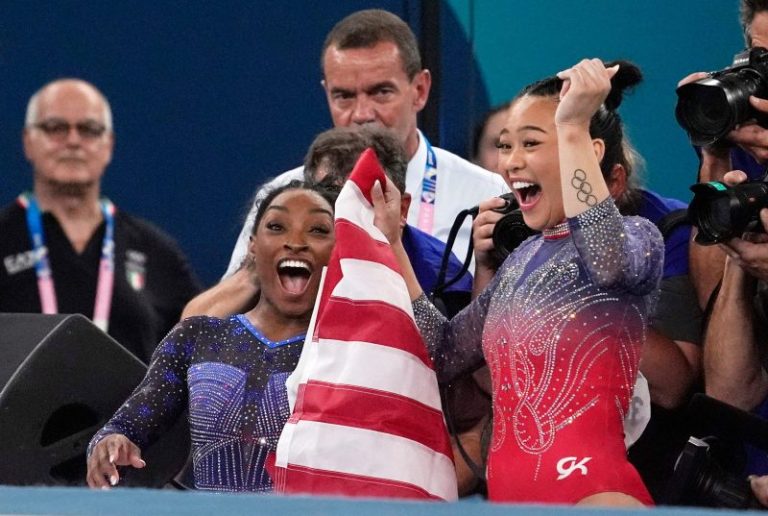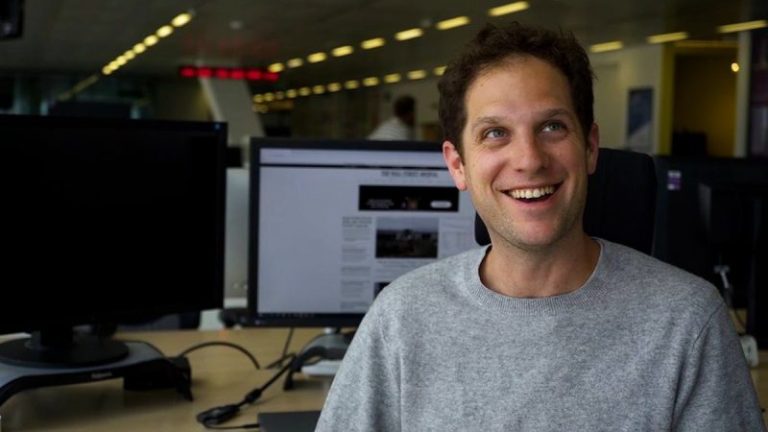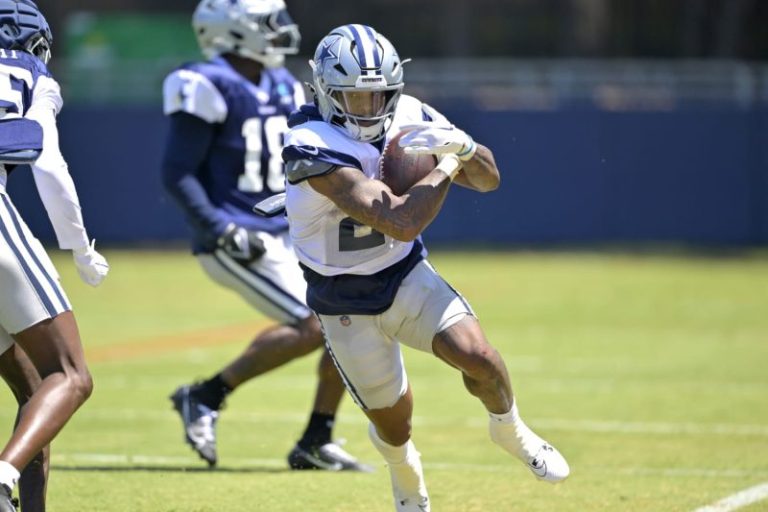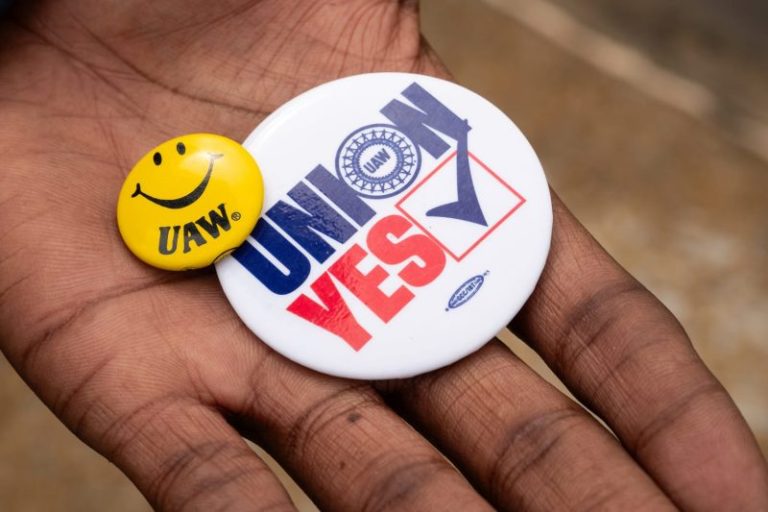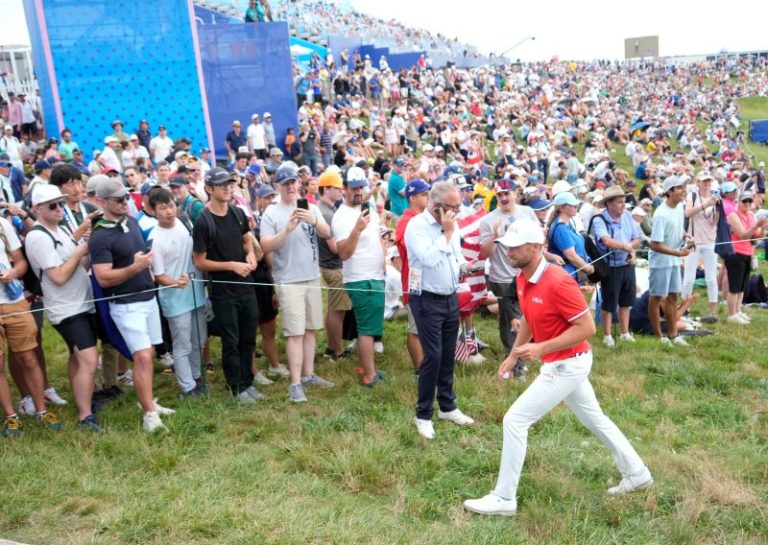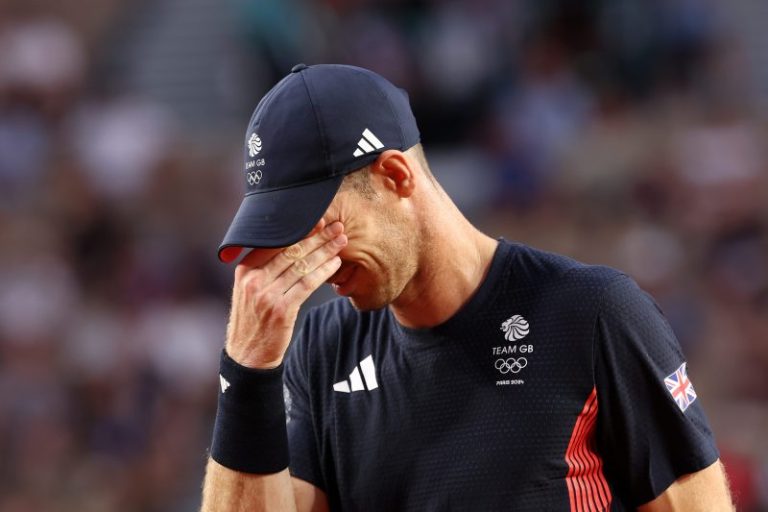PARIS — When Suni Lee’s feet hit the floor, her jaw dropped into a gleaming smile.
With an Olympic medal at stake, it appears she might have even surprised herself.
Less than two years after a pair of kidney ailments brought her gymnastics career to a halt, Lee stepped back onto the Olympic all-around podium Thursday night after winning her second consecutive medal in the event. She got there, in part, because of that grin-inducing tumbling pass on floor exercise − the first step in her final routine of the night, and the one that boosted her to a meaningful bronze medal.
It was a medal that Lee, 21, never really thought she’d win − even as recently as Thursday.
‘It’s just crazy that I was here,’ she said in a news conference. ‘I just told myself not to put any pressure on myself, because I didn’t want to think about the past Olympics or even trying to prove to anybody anything. I wanted to just prove to myself that I could do it, because I didn’t think that I could. ‘
2024 Olympic medals: Who is leading the medal count? Follow along as we track the medals for every sport.
Get Olympics updates in your texts! Join USA TODAY Sports’ WhatsApp Channel
When it was over, Lee leaped back onto the floor with gold medalist Simone Biles, jumping up and down as they waved a large American flag. It’s the third time since 2008 that the U.S. has had two gymnasts on the podium in the women’s all-around final. Shawn Johnson and Nastia Liukin finished first and second at those Beijing Olympics, and Aly Raisman joined Biles as medalists in 2016.
Not bad for someone who, in her coach Jess Graba’s words, ‘got out of bed in December.’
‘Not many people train for seven months for a medal,’ Graba said. ‘Nobody does. Only her.’
When asked what it took to get back to this point, Lee simply said that it has taken ‘so much,’ two words that belie all the anguish and frustration that she’s been through since the spring of 2023.
After winning the Olympic all-around title in Tokyo, then competing collegiately at Auburn, Lee was diagnosed with a kidney disease that wreaked havoc on her life and left gymnastics an afterthought. Further testing found a second kidney issue, and the medications used to treat the two ailments left her feeling helpless and exhausted. She’s said that swelling made it difficult for her to even put on grips. At one point, she gained 40 pounds.
Doctors eventually figured out the right combination of medications, and Lee has since said her kidney ailments − the names of which she has chosen not to disclose − are in remission. But then she had to work her way back into competitive gymnastics, returning at first in only one or two of the four events.
‘(If) you asked any of us, anybody in the room, if this was possible even three months ago – none of us (would have said so),’ Graba said. ‘We would’ve just said, ‘Let’s make the team as a specialist.’ And that’s what everybody else thought, too.
‘It’s been dicey the whole way. It’s a balancing act the whole way, just keeping her healthy and keeping her mind right and keeping her believing.’
Lee credited Graba and Biles, among others, for being there for her as she climbed her way back. Because part of managing Lee’s ailments required limiting her sodium intake, Graba purchased an air fryer so they could cook chicken without extra seasoning ahead of competitions. And at nationals, when Lee started doubting herself after a scary turn on vault, Biles walked across the floor to support her and cheer for her during her next routine.
‘Having Simone here today definitely helped me a lot, because we were both freaking out,’ Lee said Thursday night. ‘So it just felt nice to know that I wasn’t out there freaking out by myself.’
With her bronze medal Thursday, and her team gold earlier in this week, Lee has now won five Olympic medals in two trips to the Summer Games. In addition to her all-around gold at the 2021 Tokyo Olympics, she also won team silver and a bronze on uneven bars. And she could still add to her personal medal count in Paris, with apparatus finals on balance beam and uneven bars still to come.
‘Medals are nice, and it’s fun. But being here is the biggest thing,’ Graba said. ‘What she went through, and is still going through – she’s just such a fighter. I can’t say much else.’
Contact Tom Schad at tschad@usatoday.com or on social media @Tom_Schad.

